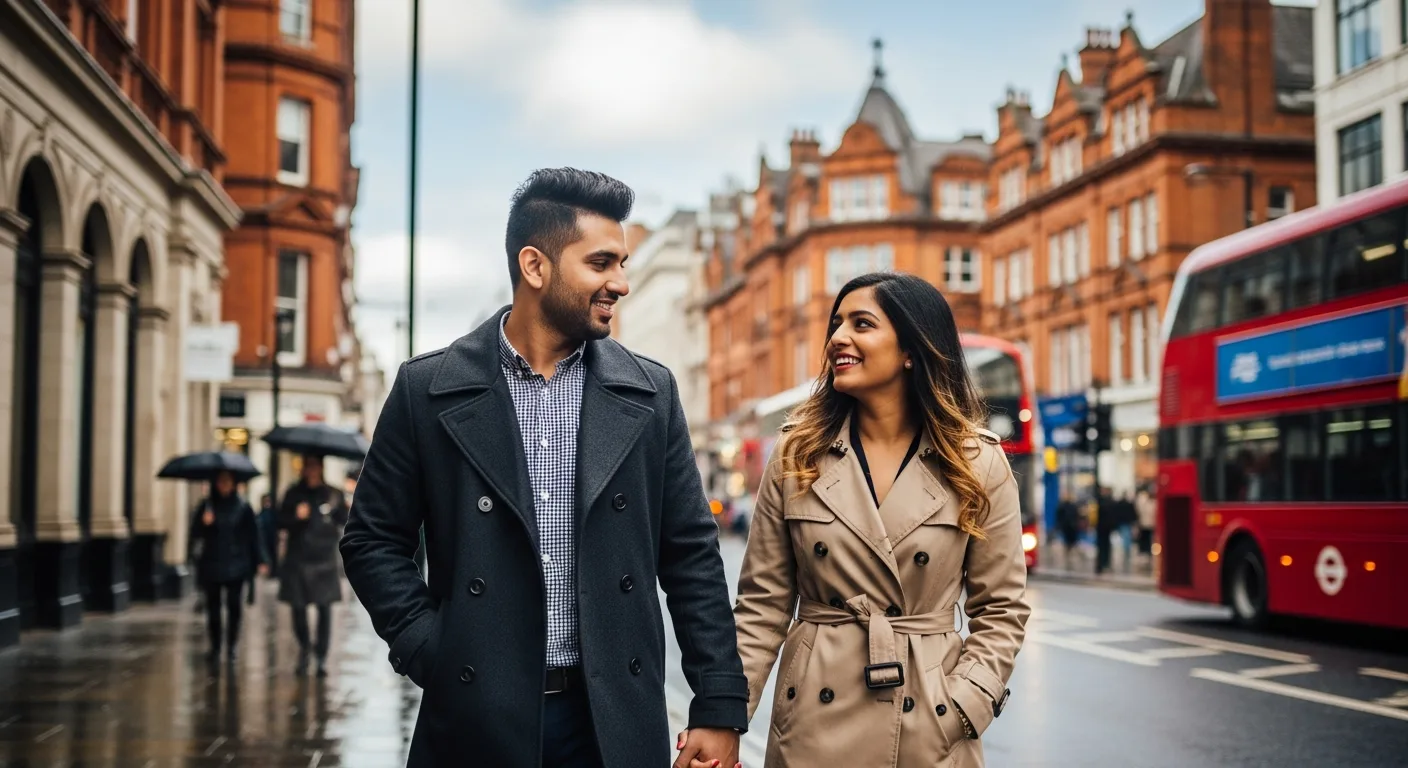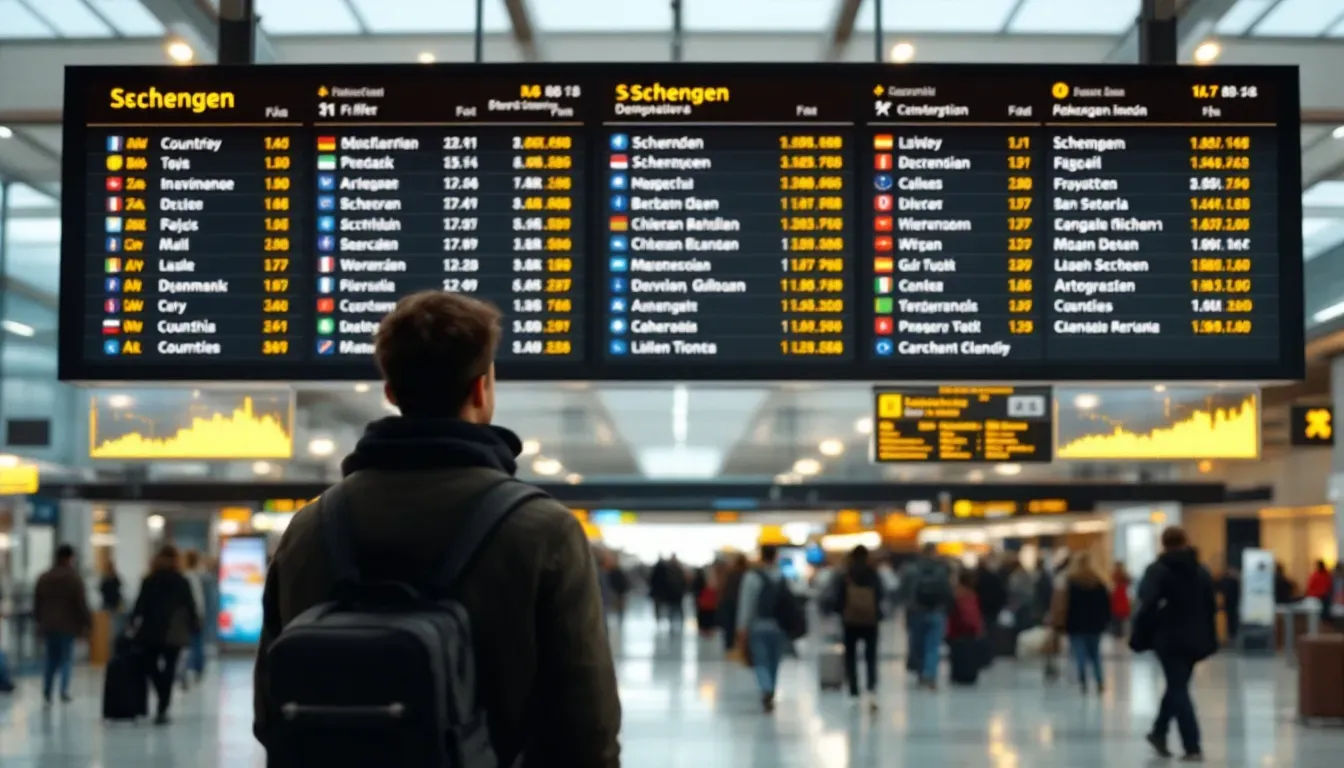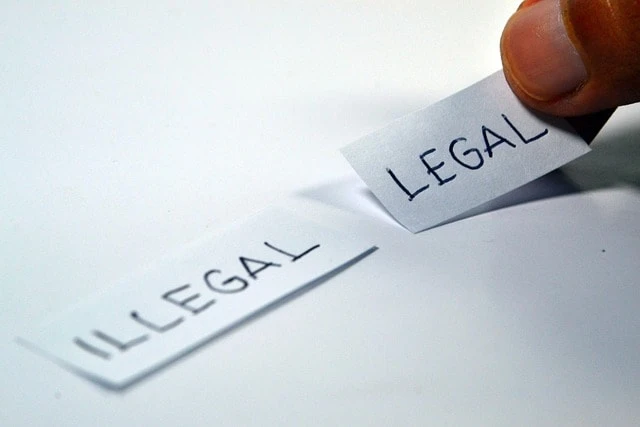Tourist Visa 2025: Why Immigration Demands Onward Tickets & How Dummy Bookings Help
You’ve packed your bags, your plans look solid, and then the question lands at the counter: “Do you have proof of onward travel?” This isn’t random. It’s a quick way for immigration and airlines to judge whether your trip has a clear exit. We see it play out at four points that matter to you most in India-to-abroad journeys: during your visa filing, at airline check-in, at transit desks, and at the final inspection on arrival. The logic is simple. Authorities want low-risk, well-documented travelers who can show a believable way out within the permitted stay. For many, a dummy ticket is the ideal flexible solution. In this guide, we’ll show how officers think, what they actually verify, and how you can satisfy the rule without locking yourself into rigid plans. Students, families, first-timers, digital nomads. You’ll all find a path that works. Secure your visa file today—dummy ticket booking in minutes. Visit our FAQ for answers, explore tips in blogs, and learn about us at About Us.
Need onward proof fast without commitment? A dummy ticket provides verifiable PNR details that airlines and embassies accept, with unlimited changes for just $15. This guide covers everything from why the rule exists to flexible compliance options tailored for Indian travelers.
An onward ticket is essential for most tourist visas because it proves to immigration officers that you plan to leave the country before your visa expires. A verifiable onward or return flight reservation with a real Passenger Name Record (PNR) from DummyFlights.com serves as official proof of exit—accepted by embassies and border authorities worldwide. This simple document helps you avoid visa rejections, airport denials, and overstay suspicions, giving your application instant credibility and compliance with international travel rules.
Last updated: November 2025 — verified against Schengen, UK, US, and Asia-Pacific tourist visa documentation requirements.
Why Authorities Ask For Proof Of Exit: The Real Story Behind The Rule

Before we dive into tactics, you should understand why this rule exists. When you see the logic, the paperwork stops feeling random and starts working for you. Need onward proof fast? 👉 Order your dummy ticket today.
Overstay Math: How Countries Quietly Rank Traveller Risk
Every border agency tracks overstay patterns by route and nationality. They look at historic data, seasonal spikes, and local labour markets. An onward ticket helps them sort genuine visitors from potential overstayers without blocking everyone.
- It signals a credible plan to leave within the permitted stay.
- It gives officers a quick cross-check against your visa dates and itinerary.
- It reduces the need for harsher blanket policies on entire routes.
If you are an Indian traveller on a 30, 60, or 90-day allowance, the exit date on your proof should land comfortably inside that window. Avoid departures on the very last day unless there is a strong reason. Students visiting during semester breaks, first-time tourists on 10–14 day holidays, and family visitors attending fixed events all benefit from an exit that looks realistic for their purpose. Officers do not expect perfection. They expect plausibility.
Fast Lanes At Busy Airports: Why Clean Files Move Quicker
Primary inspection works like triage on a busy day. Officers must keep the queues moving while picking out cases that need more questions. A tidy onward ticket does not guarantee entry. It does something more valuable. It keeps you out of the slow lane.
What helps:
- Names match your passport, including middle names common in Indian documents.
- The route makes sense. Delhi to Paris with an exit via Madrid is logical. Delhi to Paris with an exit via Manila needs a clear reason and a visible connection to your itinerary.
- Dates line up with your accommodation and insurance. If your hotel is booked to 20 May and your exit shows 22 May, carry proof for those last two nights.
Expect peak-time pressure at hubs used by Indian travellers. Dubai, Doha, Abu Dhabi, Singapore, and Kuala Lumpur are efficient but strict. Separate tickets and tight connections invite questions. If your journey uses a low-cost carrier for one leg and a full-service airline for another, assume you will re-prove onward travel during transit. Keep documents ready in both digital and printed form. At a crowded counter, speed comes from clarity, not debate.
Why Airlines Police This Rule Before Immigration Even Sees You
Airlines face penalties when they carry someone who is later refused entry. That risk sits with the carrier, not the airport. So the airline becomes your first hard checkpoint.
Agents follow prompts in their departure control systems. If your destination regularly requires proof of exit, the system will nudge the agent to verify it. Supervisors escalate unclear cases. Separate PNRs, spelling mismatches, and speculative bookings set off alarms. None of this is personal. It is risk control.
From India, you will see differences between airlines:
- Full-service carriers often read PNRs more flexibly if your story is coherent and documentation is tidy.
- Low-cost carriers tend to enforce the rule strictly. They have less tolerance for uncertainty because re-routing an inadmissible passenger costs them more.
If your plan is fluid, do not show five different “holds” with random dates. One credible, checkable exit works better than a stack of noise.
The Point Is Intent, Not A Particular Brand Of Paper
Officers are not chasing a specific ticket type. They want a credible intent to leave. That means your document should be verifiable and aligned with the rest of your file.
Think in layers:
- The onward ticket shows a believable exit.
- Accommodation shows a believable stay.
- Insurance wraps the dates.
- Your explanation ties it together in one sentence.
If you are visiting family in Germany and exiting via Amsterdam after a short rail trip, carry the train reservation or at least a plan that makes sense. If you are attending a conference in Singapore and flying onward to Vietnam, your Vietnam visa or e-approval reinforces the story. Coherence beats complexity.
Visa-Exempt, Visa-Required, Or Visa-On-Arrival: Different Doors, Same Backstop
You will meet this rule in three forms:
- Visa-exempt or eTA routes. Screening is lighter upfront. The airline compensates with tighter checks at check-in. You still need exit proof.
- Visa-required destinations. The visa process tests plausibility first. The airline and border will test it again. Bring the same story to all three points.
- Visa on arrival or eVisa. Pre-screening varies. Expect strict airline checks and a focused question at the counter on arrival.
The theme repeats worldwide. The state wants visitors who come, spend, enjoy, and then leave on time. Your onward proof is the simplest indicator that this will happen.
India-Specific Realities That Change The Conversation
Routes from India often use Gulf or Southeast Asian hubs. Many travellers combine full-service long-hauls with low-cost regional hops. These choices are smart on price. They also add checkpoints.
- Separate tickets. If the onward leg sits on a different PNR, have that confirmation ready. A screenshot from the airline app with your name and date helps.
- Name formats. Indian passports sometimes render middle names in ways that differ across apps and tickets. Standardise your profile before booking.
- Payment and refunds. If you rely on refundable exits, remember FX charges and refund timelines for Indian cards. Do not cut it close if your interview or departure is near.
Students often add campus tours or short visits to friends in nearby countries. Digital nomads may hold space for a project that is not yet confirmed. Families align trips with school holidays and festival weeks. All of these are fine if your documents sing the same tune. Keep the melody simple. Arrival date, accommodation dates, exit date, and insurance dates should form one clean arc.
What Officers Actually Verify In Thirty Seconds
Officers rarely read your entire file. They sample for consistency.
- Identity. Names match across tickets and bookings.
- Timeline. Exit sits within legal stay. No awkward last-minute scramble.
- Route logic. The geography makes sense for your stated purpose.
- Story fit. Work letters, university schedules, or event tickets support the timing.
If something looks off, questions start. That is not a failure. Answer briefly. Show the missing piece. Move on. You are not defending a thesis. You are confirming a plan.
The Payoff For You: Less Stress, More Control
When you understand the policy logic, you stop firefighting at counters. You build a file that looks right from the start. That saves time at VFS. It keeps you moving at check-in. It smooths transit. It shortens the conversation at the final desk.
Treat onward proof as part of a small system. Make the dates plausible. Keep the documents verifiable. Carry both digital and printed copies. With that, the requirement becomes a tool in your hands, not a hurdle in your path.
Where The Proof Gets Checked
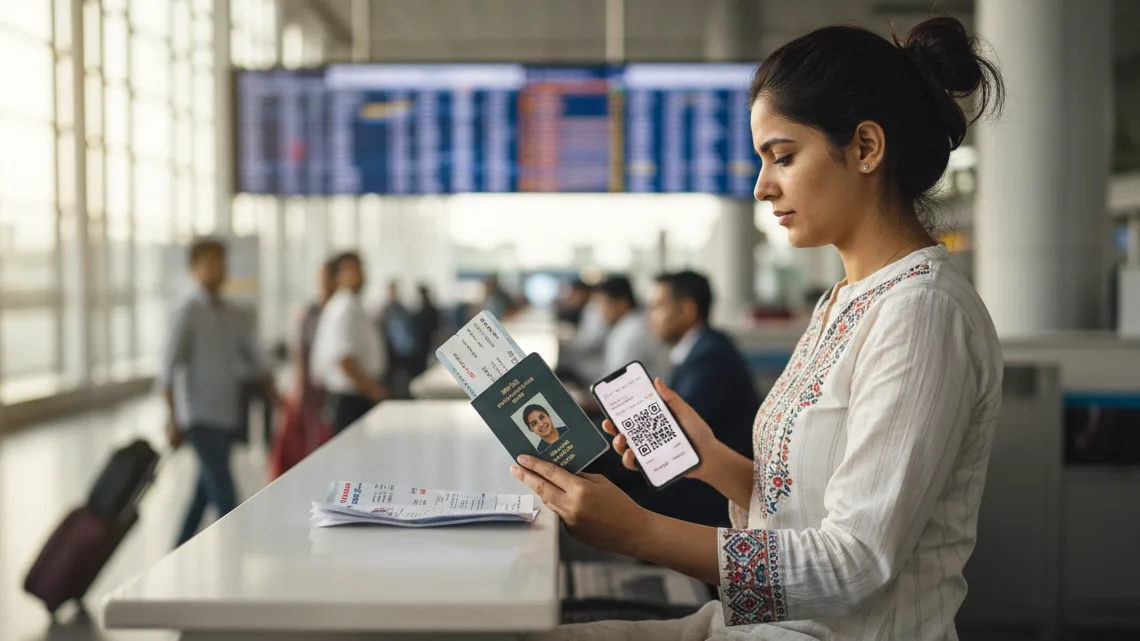
You meet this requirement more than once. Think of it as four doors. If you clear each door smoothly, the rest of your journey feels easy. Keep plans flexible and compliant—start your dummy ticket booking here.
Visa File First Look: Plausibility Beats Perfection
Your visa packet gets a quick coherence check. Officers want a believable exit that sits inside the permitted stay and lines up with your stated purpose.
What helps:
- Names and passport numbers consistent across forms and tickets
- Exit date that is not on the last legal day unless your plan justifies it
- A route that matches the story you told on your application
If you submitted through VFS in India, assume the reviewer checks for sensible dates rather than the cheapest fare. You can show a return to India or a third-country exit. Both can work if they fit your itinerary. Students should sync exits with semester calendars. Family visitors should reflect the school holidays. Digital nomads should keep the first exit conservative, even if later legs are flexible.
Airport Check-In: The First Yes Or No
The airline is financially responsible if you are refused later. That is why check-in is often the strictest gate.
Expect the agent to verify:
- Your name against the passport, including middle names
- Destination rules in the system for onward proof
- Whether your exit falls within the visa validity or the visa-free allowance
- If your routing looks feasible within the time you claim
Arrive with the PDFs ready on your phone and one printout. Keep the reservation email that shows the PNR or record locator. If you booked separate tickets for price reasons, show both. For Indian airports with multiple terminals, factor in the time for terminal transfers. Tight margins create stress and more questions.
For first-time travelers, make the file idiot-proof. For frequent travelers, do not rely on past leniency. Policies tighten at peak seasons and after compliance audits.
Transit Desk Reality: Separate Tickets, Same Scrutiny
Transits are not always passive. If you are self-connecting or switching airlines, the transit desk can re-check onward proof before issuing the next boarding pass.
Make life easy:
- Keep both booking references handy
- Show the email or app page where your name and date are visible
- If baggage is not through-checked, allow a buffer for re-drop and a potential document check
Popular Indian routings through Dubai, Doha, Abu Dhabi, Singapore, and Kuala Lumpur are efficient but unforgiving with timing. Low-cost connections in Southeast Asia can also ask again, especially if you exit immigration to re-check bags. A clean, verifiable onward reservation saves you from buying a last-minute ticket at airport prices.
Arrival Interview: Thirty Seconds To Make Sense
Primary inspection is quick. The officer samples, verifies, and decides.
Be ready to confirm:
- Your exit within the allowed stay
- Accommodation that bridges the dates
- Funds or payment method, if asked
- Any regional hops that explain your route
Speak in short sentences. Match your answers to the documents. If you plan an open-jaw trip, mention the surface leg briefly and show the rail or coach booking. If you intend to exit by land or sea, carry that confirmation. Keep your insurance certificate visible in the same folder. The cleaner the arc from arrival to exit, the faster the stamp.
If You Cannot Show Proof: Real Outcomes And Quick Fixes
It happens. A booking expired. A name was misspelled. You can still recover if you act fast and stay calm.
Possible outcomes:
- Denied boarding at origin with advice to present proof
- Re-check at transit that forces a purchase or a verifiable hold
- Secondary inspection on arrival with longer questions and, in rare cases, refusal of entry
Practical fixes that work:
- Buy a fully refundable exit and calendar the refund window
- Change the date on an existing reservation to land within your visa validity
- Secure a verifiable, time-limited onward reservation that the agent can pull up in the airline system
Avoid showing multiple speculative holds. One credible document beats five questionable ones.
What Agents Actually Check On The Screen
Understanding the workflow helps you prepare smartly.
- Departure Control System prompts. The system flags routes that require proof of exit.
- Name normalization. Small spelling gaps can look bigger in airline tools. Standardize your name format across profiles.
- Visa notes. Some routes add a checklist note for the agent. Expect a question even if the rule seems soft online.
- PNR visibility. If your onward reservation sits in a global distribution system, the agent can often validate it quickly.
For separate tickets, do not rely on a fare screenshot. Show the airline email that clearly lists your name, city pair, and date. If you used points, carry the e-ticket receipt from the frequent flyer portal.
Documents That Scan Cleanly Every Time
Build a simple pack. It takes minutes and saves hours.
- Onward ticket or verifiable reservation with PNR
- Inbound ticket if you are on separate bookings
- Hotel or accommodation confirmations that bridge the gap from arrival to exit
- An insurance certificate that covers the entire stay
- For students and business travelers, a short letter that ties dates to your schedule or event
- Printed copies in a thin folder and offline copies on your phone
Use consistent file names. Example: “PassportName_Onward_2026-02-10.pdf”. At a counter, speed comes from not scrolling.
India-Specific Playbook For Busy Hubs
Your starting point shapes the questions you get. Plan for it.
- Metro departures. Delhi, Mumbai, Bengaluru, Hyderabad, and Chennai see heavy traffic to Gulf and ASEAN hubs. Expect closer checks on one-way entries to visa-required countries.
- Low-cost segments. If you used a low-cost carrier for a regional hop, the staff may ask again at the transit desk. Keep both tickets visible.
- Family travel. When traveling with children, carry school letters that explain the holiday window. Ensure every name matches across tickets and passports.
- Students. If you stack a short leisure trip before or after a university visit or exam, carry the schedule or admit card to make dates believable.
- Digital nomads. Keep the first exit conservative and within 30 to 60 days, even if you will extend later using the host country’s processes.
The Small Habits That Keep You Moving
Little things add up. Adopt these, and you will glide through.
- Screenshot essential pages before you leave for the airport
- Charge your phone and carry a small power bank
- Keep one spare set of prints in your cabin bag
- Arrive a bit earlier when you have separate PNRs
- Use one sentence to explain the route, then show the document
Treat each checkpoint as a quick confirmation, not a debate. You know the rule now. You know what they check. With a file that is coherent and verifiable, you walk through all four doors without drama.
Compliant, Flexible Ways to Get Your Dummy Ticket When Plans Are Fluid

Plans change. Interviews move, friends’ schedules shift, and good fares vanish overnight. You can still meet the onward proof requirement without locking yourself into a ticket you do not want. Think in options, not obstacles. Flight tomorrow and no exit proof? Book a dummy ticket instantly.
Refundable Returns That Buy You Breathing Room
A fully refundable return is the cleanest answer when you need certainty with flexibility. You purchase a ticket that you can cancel later, then carry the receipt and e-ticket for checks. It looks strong to an immigration officer because it shows a clear exit within your permitted stay.
Smart moves:
- Choose fare classes that refund to the original payment method with minimal delay.
- Monitor your card cycle and FX exposure to avoid surprises.
- Set calendar alerts for the refund deadline and the ticket’s expiry date so you do not miss the window.
If your route involves a low-cost airline for a separate regional hop, keep the refundable long-haul as your safety net. You can still change the short sector later if plans evolve.
Third-Country Exits That Make Your Route Make Sense
You do not always need to fly back to India. A third-country exit can be perfect for open-jaw sightseeing or a regional loop. For example, fly into Paris, exit via Madrid, and add a quick hop to Lisbon by train. This works for students, family visitors, and digital nomads, as long as your documents tell one coherent story.
Carry proof that connects the dots:
- The onward journey ticket with your name and date
- Accommodation that bridges your stay to the exit city
- Rail or coach reservations for surface travel, when relevant
If you hold an e-tourist visa for a part of your trip and a separate entry for another country, keep both approvals handy. Officers do not need your entire plan, only enough to see that your exit is believable and timely.
Time-Limited Holds And Agency Reservations That Verify Fast
Sometimes you only need a reservation that is verifiable during a specific window, such as a visa appointment or a tight connection at a busy hub. Time-limited holds can solve this neatly when you cannot commit to a final date yet.
Make them work for you:
- Align the hold validity with your visa application or interview date.
- Keep one live PNR rather than multiple speculative holds.
- Use real personal details that match your valid passport and your application form.
If a counter agent needs to validate the PNR, having a reservation that displays quickly in the system saves minutes. It also avoids awkward questions about all these documents if one looks inconsistent with the rest of your file.
Open-Jaw, Land And Sea Exits, And Long Backpacking Routes
Complex trips can still look clean if you build a simple evidence trail.
- Open-jaw itineraries. Show how you travel between arrival and departure cities. A short train booking or bus ticket removes guesswork.
- Land or sea exits. Carry ferry confirmations or coach bookings. Some yellow fever-affected countries require additional health proof for onward travel, so check entry notes and keep your yellow fever vaccination card if you have been in those regions recently.
- Backpacking chains. Do not try to prove every leg at once. Provide a clear first exit within your allowed stay, then refresh your proof as you move.
If you travel on separate tickets, keep both booking references visible and ensure your name matches across the photo page of your passport and all confirmations.
Keep Your Timeline Plausible And Your Paperwork Consistent
Most delays happen because the dates do not sync together. Solve that first.
- Your exit should be well inside the permitted stay, not at the razor edge.
- Accommodation should bridge the full period.
- Insurance should overlap the entire stay.
- Return ticket or third-country exit should reflect your expected date of departure.
If you are using an e visa portal for any segment, store the approval, the visa status page, and the final submission receipt as PDFs. For international travellers with older and newer passports, carry the old passport if it contains visas that explain travel history, and make sure the new passport has enough blank pages.
What Officers Actually Want To See In Seconds
The check is quick. Officers sample for consistency, not drama.
- Names and personal details match across bookings and uploaded documents
- Exit sits within the stay you declared on the application
- The route is logical for your purpose, whether a casual visit or a conference
- Funds are adequate to finish the trip without strain
If asked about funds, show a recent statement or credit limit. The point is not just sufficient money but a credible ability to complete the trip as planned.
A Short Word On Health, Permissions, And Special Cases
A few edge scenarios are worth planning for:
- Travelers arriving from certain regions may face health document checks. Keep vaccination proof in the same folder as your tickets.
- Some activities permitted under entry rules still require prior permission from a civil authority. If you are unsure, check the official guidance of the foreign country you are visiting.
- If family members travel together, each person should have a separate passport and documents required for their own entry. Avoid mixing files.
- Pakistani passport holders and foreigners applying from Pakistan often face additional documents or prior permission through an Indian mission for visiting India. Carry printed approvals if this applies, and ensure validity co-terminus where the authority specifies it.
These are not roadblocks. They are reminders to keep the file tidy so your story remains simple.
When Your Plan Is Fluid But You Need Proof Now
There are moments when you need something verifiable immediately. That is where professionally issued reservations help, especially if your appointment is near or your airline is strict at check-in.
If you want a reservation that agents can verify quickly, DummyFlights.com provides instantly delivered PDFs built for visa checks and airline counters. Each booking includes a live, checkable PNR and allows unlimited date changes, which is useful when interviews shift. The price is $15, approximately ₹1,300, and payment is by card. Use accurate details and timelines so the reservation aligns with your overall itinerary and visa application. It is a clean way to present onward proof without buying a full fare in advance.
Small Habits That Keep You Out Of Trouble
Adopt a few rituals and you will glide through counters even on busy days.
- Save critical PDFs offline and keep one printed copy.
- Name your files clearly, for example, “Surname_Given_Onward_2026-03-12.pdf.”
- Screenshot PNR pages in case airport Wi-Fi is patchy.
- Check your visa application for minor errors like date formats or a missing middle name.
- If your plan changes, update the reservation before you travel so your documents match the story you tell.
Finally, remember the spirit of the rule. The onward proof is a quick proxy that you will leave on time. With a coherent route, a verifiable ticket, and neat paperwork, you turn that check into a formality and keep your trip moving.
What Travelers Are Saying
Comparing Rationale And Enforcement Across Common Destinations
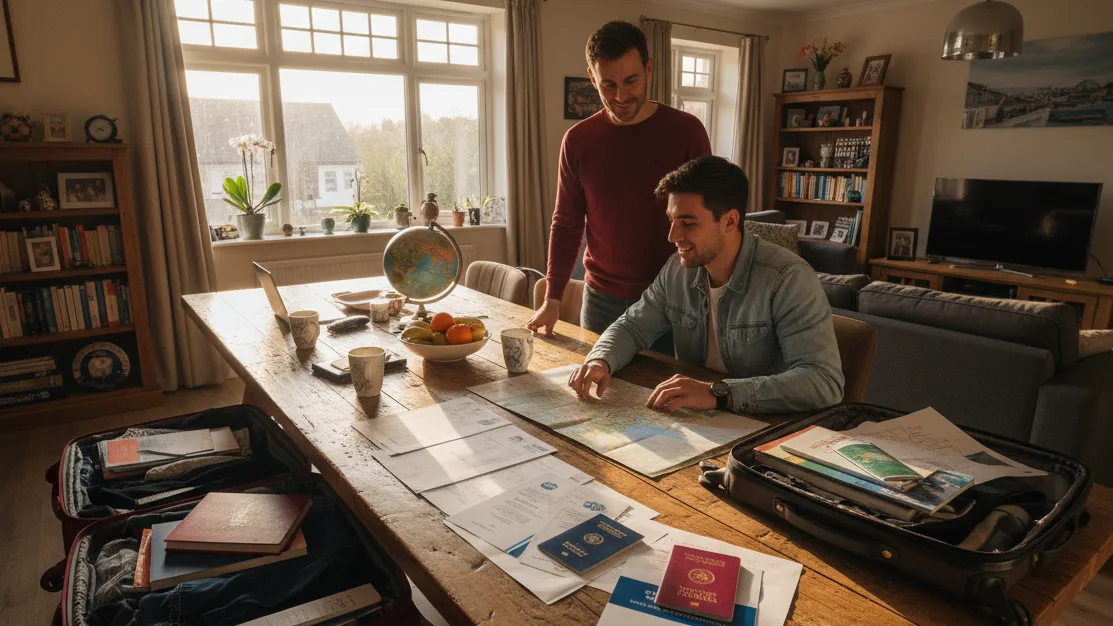
You see the onward proof rule in many shapes, but the intent stays the same. Countries want a believable exit within the allowed stay. Here is how it plays out across regimes you are likely to use. Make check-in smoother with a verified dummy ticket booking.
Visa-Exempt, Visa-On-Arrival, And ETA: Light Precheck, Firm Exit Expectation
When you travel visa-exempt or on an electronic travel authorization, screening happens early and fast. Airlines still ask for an onward journey at check-in. Border officers ask again for coherence.
- If you apply for an ETA, keep a copy of your eta status and itinerary.
- Budget time at the counter to show your ticket, accommodation, and insurance.
- Travellers arriving on separate tickets should carry both PNRs.
International travel document holders who rely on digital evidence should save files offline. If your route includes a quick regional loop, plan a realistic exit and show it in one clean sentence.
eVisa Countries: Quick Portals, Real Checks At The Counter
Many countries run efficient e-visa services. You still need a credible exit plan. The portal is not the final gate.
- Keep proof of payment status and the receipt for the e visa fee.
- Some portals include a link to verify payment. Save that page as a PDF in case payment status updating is slow.
- Be ready to show your exit at the airline check-in, even when an e-visa facility is approved.
When you choose an e visa type, match it to your purpose. A visitor visa is for tourism. An e-business visa is for meetings. An e-conference visa is for a scheduled event with invitation letters. If you travel for medical treatment, an e-medical visa or an e-medical attendant visa may fit. An e-medical visa holder should also carry hospital scheduling. An e-medical attendant must show their relationship and the patient’s plan. These categories exist to keep the entire process clear at the border.
India-Facing Notes You Can Use Right Away
If you are visiting India, the portal will ask you to select your arrival date and purpose. Fees vary by nationality and duration.
- Check applicable e visa fees and note that bank transaction charges may apply.
- Pay online the minimum required by the portal and keep the receipt.
- Some applicants need one more document beyond the required documents. This is a document depending on the category.
Foreigners applying with complex histories should read the fine print. Applicants of Pakistani origin often need prior permission through an Indian mission and may be guided to a regular visa with a separate application. Permanent residents of third countries should carry proof of status. If you changed passports, carry the old passport along with the new visa to keep your travel history intact.
Visa-Required Regimes: Adjudication First, Gatekeeping Later
Where you must apply in advance, officers assess plausibility during the file review. Then the airline and border confirm it briefly.
- Build a simple timeline that lands your exit inside the stay.
- Keep the wording of your application form aligned with bookings.
- If a country asks for invitation letters, attach them and show the exit date that ties to those events.
If your sole objective is tourism, keep work or study links out of the narrative. For a short study or a short-term yoga programme, match your dates and carry the provider confirmation. Some routes allow club activities permitted within the visitor category, but the burden to show a timely exit remains with you.
Separate Tickets, Open-Jaw Routes, And Continuous Stays
The logic is simple. Exit must be believable. If you run an open-jaw trip, show how you will reach the departure city. If you plan a continuous stay across regions, split the proof into segments.
- Keep a third-country exit for the first leg.
- Refresh your onward reservations as you move.
- Treat every boarding gate as a mini visa application where coherence wins.
Airlines accept verifiable reservations when they can see your name and date in their system. Reliable dummy ticket providers book you with major airlines like Emirates, Qatar Airways, or Singapore Airlines. That gives agents an easy lookup while you keep flexibility.
Payment, Names, And Dates That Always Scan Clean
Name consistency across tickets and visas is essential. Match the photo page of your passport every time. If your route required a new visa after plans changed, carry both receipts and the updated itinerary.
- Use clear filenames and keep one printed set.
- Expect agents to ask for all these documents if a date looks off.
- Keep your files aligned with Indian systems that prefer exact spellings.
Watch refund windows and fare rules. For refundable exits, check bank transaction charges and timelines. If you buy a quick hold to satisfy a check, ensure the PNR is live while you travel. Avoid holding multiple fake segments. One clean reservation saves time.
Special Populations And Edge Cases That Need Extra Care
A few scenarios deserve attention because the checks can feel stricter.
- Travellers arriving for events must align their stay length with ticketed dates.
- If you are of Indian origin in a third country, expect additional screening or prior permission depending on the route.
- Families should prepare a separate application for each member and not rely on shared files.
- International students on a break should keep proof of term dates to explain their itinerary.
For international travellers who plan medical treatment abroad, carry hospital confirmations and proof of funds. If your caregiver accompanies you, the e medical attendant category may apply in some jurisdictions. Always check activities permitted and the documents required by that country before you book.
Practical Micro-Steps That Keep Your e-Medical Visa Application Moving Forward
You do not need a complex system. You need a tidy one.
- Save the approval, the receipt, and the ticket in one folder.
- Keep a short script that explains your route in one sentence.
- Ensure every date forms a clean arc from arrival to exit.
- If a portal shows a delay, carry screenshots of the payment status and the confirmation page.
In some countries, you can apply for a new visa after a change of plan. Respect the local rules. Some ask for a continuous stay within a fixed window. Others ask you to exit and re-enter. Follow the rule as written and carry proof.
Across visa-exempt, ETA, eVisa, and regular visa regimes, the onward rule serves the same purpose. It shows a credible exit. Choose the category that matches your trip. Keep proof of fees and payments. Align your narrative with your bookings. If the portal is slow, carry the receipt. If the airline is strict, carry a verifiable reservation. If a border wants clarity, show the simple arc of your stay. Do this and your onward proof becomes a quick nod at every counter, not a hurdle that slows you down.
Make Onward Proof Work For You
Onward proof isn’t a hurdle. It’s your fast pass through the system. Build a tidy file that tells one clear story: entry, stay, exit—within the rules. Keep dates plausible, documents consistent, and copies ready in print and on your phone. Expect checks at visa filing, airline check-in, transit desks, and arrival. Answer briefly. Show the page that matters. Move on.
Choose the option that fits your plan: refundable return, third-country exit, or a verifiable reservation that agents can confirm. Align accommodation and insurance so your timeline forms a clean arc. For open-jaw or surface legs, carry the rail or ferry proof. Do this, and the question, “Do you have proof of onward travel?” becomes a quick yes, not a last-minute scramble. Changing dates? 👉 Order your dummy ticket today.
To further strengthen your application, consider these additional tips: Always cross-check your PNR with the airline's website before travel. For group applications, ensure all family members' documents align perfectly. Digital nomads can layer multiple dummy tickets for extended itineraries, refreshing as needed. Students should include academic calendars to justify short trips. Business travelers, pair with invitation letters dated precisely. With these strategies, your onward proof system is bulletproof.




